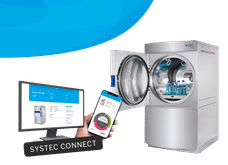Heusler Materials: Goldmine for Future Technologies
New quantum state of matter discovered in Heusler compounds
Advertisement
For many years, scientists at the Johannes Gutenberg University Mainz (JGU) in Germany have been world leaders in research on Heusler compounds, which are an important material class for the use in spintronic applications. Over the past few years, new application areas have emerged in the field of renewable energy, such as solar energy and thermoelectrics. And now Heusler compounds are also being considered for future technologies such as the quantum computer. "Calculations have uncovered a new quantum state of matter in Heusler compounds, which opens up previously unimagined usage possibilities", explains Professor Claudia Felser from Mainz University. "Heusler materials are real all-rounders and a veritable goldmine for future technologies." Together with Professor Shou Cheng Zhang of Stanford University, the scientist from Mainz has shown that many Heusler compounds can behave like topological insulators (TI). TIs were discovered just five years ago.
Key discoveries in the field of physics or material sciences are often made by chance during experiments in laboratories. However, this was not the case with topological insulators. In 2006, Professor Zhang of Stanford predicted that a new quantum state of matter would be identified in nanostructures of the familiar semiconductor mercury cadmium telluride (HgTe). One year later, this was confirmed in experiments carried out by the Würzburg team led by Professor Laurens Molenkamp. Completely new mathematical concepts are required to understand the physical aspects of what has been discovered.
For almost five years now, TIs have been a hot topic in the field of solid state and material physics. Characteristic of topological insulators is the fact that the materials are actually insulators or semiconductors, although their surfaces or interfaces are made from metal - but not ordinary metal. Like superconductors, the electrons on the surfaces or interfaces do not interact with their environment - they are in a new quantum state. In contrast with superconductors, topological insulators have two non-interacting currents, one for each spin direction. These two spin currents, which are not affected by defects or impurities in the material, can be employed in the futuristic electronics field of 'spintronics' and for processing information in quantum computers.
It is now supposed that Heusler materials may have the same capabilities. Heusler compounds are made up of three elements, which often have semiconductor or magnetic properties. This compound class was discovered by Fritz Heusler back around 1900. One special feature of these compounds is that they exhibit characteristics other than those that might be expected in view of the elements of which they are composed. The first Heusler compound, for example, was made from the non-magnetic elements copper, manganese, and aluminium. Yet, Cu2MnAl acts as a ferromagnet, even at room temperature. On the other hand, a semiconductor can result when three metals are combined. New semiconductors can be designed in the class of Heusler materials with regard to the field of renewable energies; they can be used in solar cells or in thermoelectric applications, for converting heat into electricity. Mainz is internationally renowned as a major location for the design and synthesis of Heusler materials. Important discoveries with regard to Heusler compounds, their properties, and their uses in a wide range of potential applications have been made in Mainz.
The news that Heusler materials are now being considered as possible topological insulators has met with excitement all over the world. "There are two reasons for this," explains Professor Felser. "On the one hand, this large material class with over 1,000 known representatives contains more than 50 compounds that bear the hallmark of TIs. And on the other hand, it is now possible to design completely new physical effects. As the materials are made up of three elements, they can offer a range of other interesting features in addition to the topological quantum state." It is now possible to combine two quantum states such as superconductivity and topological surface effects. This paves the way for completely new and as yet undiscovered characteristics, some of which have already been predicted. "It was previously not considered possible to combine all these possibilities in just one material," explains Professor Felser.
Orignal publication: Stanislav Chadov, Xiaoliang Qi, Jürgen Kübler, Gerhard H. Fecher, Claudia Felser & Shou Cheng Zhang; "Tunable multifunctional topological insulators in ternary Heusler compounds"; Nature Materials, published online May 2010
Other news from the department science
These products might interest you
Most read news
More news from our other portals
See the theme worlds for related content
Topic world Synthesis
Chemical synthesis is at the heart of modern chemistry and enables the targeted production of molecules with specific properties. By combining starting materials in defined reaction conditions, chemists can create a wide range of compounds, from simple molecules to complex active ingredients.

Topic world Synthesis
Chemical synthesis is at the heart of modern chemistry and enables the targeted production of molecules with specific properties. By combining starting materials in defined reaction conditions, chemists can create a wide range of compounds, from simple molecules to complex active ingredients.



























































